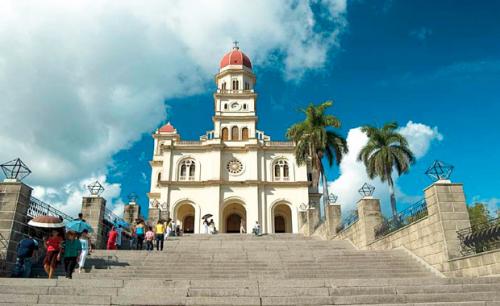Tourism and religion go hand-in-hand in the Caribbean
- Opinión

“Religious tourism is part of the Caribbean culture, and is also good business. The local religions of the beautiful islands of the Caribbean, from voodoo in Haiti to obeah in Jamaica and santería in Cuba, provide valuable cultural and historical information about the Caribbean. This type of tourism allows visitors to become acquainted with the main religious sites in the region that are also related to important historical events.” This is the recommendation of a paper published by the Italian magazine TTC Caribbean dedicated to the promotion of tourism to the region.
“The voodoo cult, born in Haiti, has for decades been a good theme for horror movies; but along with other Caribbean religious creeds, it has also become a real attraction for international tourism,” says the promotional article about tourism in the Caribbean Sea area. In Bonaire –an island in the Leeward Antilles in the Caribbean Sea– churches, mosques and synagogues provide a comprehensive service in Papiamento, Dutch, English and Spanish. In Anguilla, a guide to “Places of Worship” was published with a list of churches of the predominant religious denominations, their addresses and schedules.
In the Dominican Republic there is the “Route of Faith” consisting of a journey or pilgrimage that stops at many monuments and sites of religious significance for Catholics. It includes a visit to Santo Domingo, the city that experienced the first evangelization in America. In addition, there is the “Holy Hill Sanctuary” where Christopher Columbus ordered the first Christian cross to be placed in America.sz
In eastern Cuba, there is the temple of Our Lady of Charity, also known as the Virgin of El Cobre or Our Lady Virgin of Charity in honor of the Virgin Mary, pontifically designated as the Patroness of Cuba. The image of the virgin in Cuba is enshrined in the Basilica that is the National Sanctuary of Our Lady of Charity of El Cobre, built in 1926. The sanctuary is in the picturesque village of El Cobre, very near Santiago de Cuba.
On December 20, 1936, Pope Pius XI granted a canonical coronation of the image of the virgin which was found at sea in the 17th Century. The Caribbean has also become a frequently visited site by tourists as a destination for weddings and other religious ceremonies.
The opinion of experts, says the TTC digital magazine, is that the Caribbean needs to constantly innovate the tourist offers. Religions have a crucial influence in the popular culture and are a major attraction, but they are not sufficiently exploited in the Caribbean. The religious tourism sector is strongly rooted in Europe where it is estimated that more than fifteen million people enjoy some kind of tourism of this nature every yar. In Latin America, there are several specialized tourist agencies in this sector.
Generally, the main motivations for religious travel are visits to shrines and holy places, as well as pilgrimages, visits to the tombs of saints, attendance and participation in religious celebrations, visits to religious leaders, eucharistic congresses, holy years, etc. Traditional African religions in the Caribbean and Brazil can greatly benefit tourism in the area, in the same way that religions have promoted the movement of people to remote sites since ancient times. Religious tourism, says TTC, may be the main reason for travelling, but it can also be part of a holiday trip and provide additional attractions to a destination.
Such is the case, for example, of millions of non-Catholic persons who visit the Vatican each year.
All this makes religious tourism a thriving business. Two years ago, the annual value of religious travel around the world was estimated at 18 billion dollars, involving 300 million travelers.
Religious tourism, unlike all other segments of the tourist market, has faith as its fundamental motivation. At present, the holy cities that have historically been the destination of pilgrimages –Jerusalem, Mecca or Rome– continue to be important tourist landmarks. Perhaps the Caribbean region could also be one soon. Why not?
August 5, 2016.
A CubaNews translation. Edited by Walter Lippmann.
Del mismo autor
- ¿Por qué la sostenida popularidad de Trump? 20/07/2020
- Ya no es la economía, estúpido, es el virus 15/07/2020
- De qué no será capaz Trump para reelegirse 02/06/2020
- The Capitalist Crisis is Worse than Covid-19 26/05/2020
- Refutación del fundamentalismo religioso 19/05/2020
- Precedents in Cuba of “Operation Gideon” 16/05/2020
- Precedentes en Cuba de la Operación Gedeón 14/05/2020
- Los grandes perdedores del Super Bowl 18/02/2020
- El papel del miedo en las elecciones de EEUU 11/02/2020
- Impacto de Trump en la juventud de EEUU 24/01/2020
